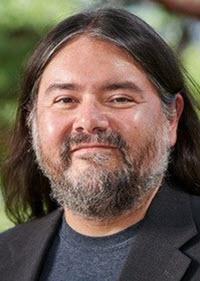Abstract
Excerpted From: Matthew L.M. Fletcher, Federal Indian Law as Method, 95 University of Colorado Law Review 375 (2024) (218 Footnotes) (Full Document)
 Morton v. Mancari is well-known in Indian law circles as a foundation for the tribal self-determination era, which is generally understood to have begun in the late 1960s and early 1970s. The case involved an Act of Congress that required the federal “Indian Office” (now called the Bureau of Indian Affairs) to grant preference in employment to “Indians.” The case is typically understood as the basis for analyzing how federal statutes that apply exclusively to Indian people do not implicate the anti-discrimination principles of the United States Constitution. This understanding of the case, while correct, is too narrow.
Morton v. Mancari is well-known in Indian law circles as a foundation for the tribal self-determination era, which is generally understood to have begun in the late 1960s and early 1970s. The case involved an Act of Congress that required the federal “Indian Office” (now called the Bureau of Indian Affairs) to grant preference in employment to “Indians.” The case is typically understood as the basis for analyzing how federal statutes that apply exclusively to Indian people do not implicate the anti-discrimination principles of the United States Constitution. This understanding of the case, while correct, is too narrow.
Mancari, instead, should be understood as articulating the definitive method for analyzing the constitutionality of Acts of Congress establishing favorable or unfavorable treatment toward Indian people. This method is stated plainly in the text of Justice Harry Blackmun's majority opinion: “As long as the special treatment can be tied rationally to the fulfillment of Congress'[s] unique obligation toward the Indians, such legislative judgments will not be disturbed.”
This Essay is written in the shadow of a series of noxious attacks on core principles of federal Indian law, most notoriously Haaland v. Brackeen, a challenge to the constitutionality of the Indian Child Welfare Act (ICWA). The Supreme Court did not reach the merits of the equal protection challenges, but during oral argument, several justices expressed skepticism that congressional Indian affairs enactments that grant privileges or preferences to Indian people could survive scrutiny under an equal protection analysis. Justice Brett Kavanaugh, one of the justices most interested in the equal protection claims, wrote separately to highlight these issues, asserting that “the equal protection issue is serious.” The parties siding with ICWA's constitutionality argued to the Court that Mancari is a guide, whereas the opponents to ICWA's constitutionality wanted the Court to ignore the case altogether.
This Essay is a full-throated defense of Mancari as a method of constitutional interpretation. Not only is the Mancari method correct, but it is also the only justifiable method. This Essay begins in Part I with a short background on federal Indian law and its default interpretative rules. In Part II, the Essay surveys the application of and challenges to the Mancari method. In Part III, the Essay continues with a comparison of the methods proposed to replace or displace the Mancari method. In Part IV, the Essay shows how the method should be applied to placement preferences, a controversial component of ICWA.
[. . .]
In sum, the Mancari method requires significant deference to Congress's authority in Indian affairs, while the other methods place the onus on the Judiciary's interpretations and policy choices. The choice between these options should be easy. Choosing deference to Congress is largely mandated by the Constitution, which already places considerable power in Congress. The choice to defer to Congress is already the law, in that the default interpretative rules of federal Indian law require considerable deference to Congress (and to tribal interpretations). The choice to defer to Congress is also good policy, in that Congress, with the assistance of expertise from tribal nations and the Department of the Interior, can assess the implications of making changes to Indian affairs law and policy.
Applying strict scrutiny to Indian affairs legislation that is rationally related to the fulfillment of the trust responsibility says one thing very clearly: the majority of the Court does not prefer the outcome of the Mancari method and will instead impose its own policy preferences. Not only is the Mancari method correct, but it is also the only justifiable method.
Harry Burns Hutchins Collegiate Professor of Law and Professor of American Culture, University of Michigan. Enrolled citizen, Grand Traverse Band of Ottawa and Chippewa Indians.


